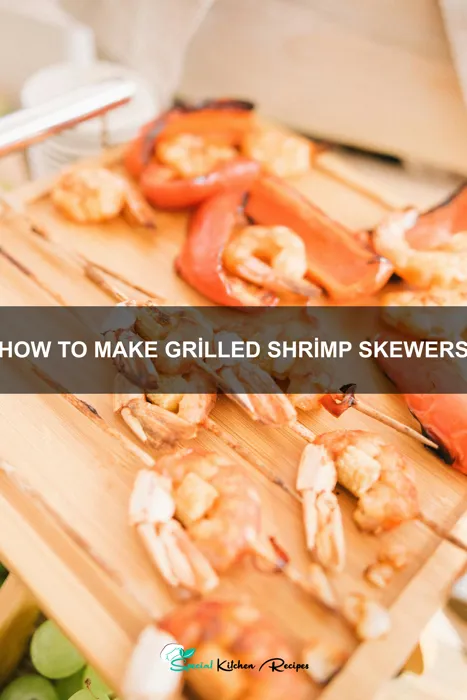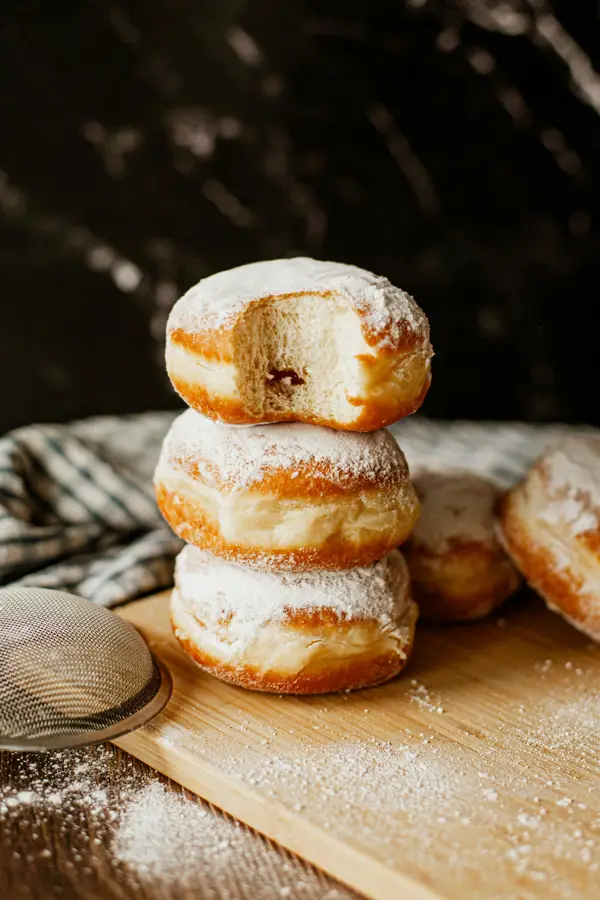Grilled shrimp skewers, a seemingly simple dish, boast a surprisingly rich and diverse history, spanning continents and cultures. While pinpointing an exact origin is difficult, the practice of grilling seafood on skewers dates back centuries. Archaeological evidence suggests that early humans utilized sharpened sticks to cook fish and shellfish over open flames, a precursor to the modern kebab. The Mediterranean region, particularly Greece and the Levant, is often credited with early forms of skewered seafood, influenced by their abundant coastal resources and warm climates ideal for grilling. These early iterations likely involved simple preparations, focusing on the natural flavors of the shrimp enhanced by the smoky char of the grill.
The popularity of shrimp skewers has exploded globally in modern times, driven by the increasing accessibility of shrimp and the growing appreciation for quick, healthy, and flavorful meals. Globally, shrimp consumption has steadily risen, exceeding 5 million metric tons annually according to the Food and Agriculture Organization of the United Nations (FAO). This substantial demand has fueled innovation in shrimp preparation, leading to countless variations on the basic grilled skewer. From simple salt-and-pepper seasoning to elaborate marinades incorporating exotic spices and herbs, the possibilities are seemingly endless. The ease of preparation and inherent deliciousness of grilled shrimp also contribute to its widespread appeal, making it a popular choice for casual gatherings, barbecues, and even upscale restaurants.
Culturally, shrimp skewers hold significance in various cuisines. In many Asian countries, particularly in Southeast Asia, shrimp is a staple food, and variations of grilled shrimp skewers are commonly found in street food markets and home kitchens. These often feature unique flavor profiles, reflecting the region’s diverse culinary traditions. In Latin America, grilled shrimp is a common ingredient in ceviches and other seafood dishes, and skewers offer a convenient and visually appealing way to present them. The versatility of shrimp skewers allows for easy adaptation to different tastes and preferences, making them a true culinary chameleon, reflecting the global fusion of flavors that characterizes modern cuisine. The simple act of grilling shrimp on a stick transcends mere sustenance; it represents a connection to our culinary heritage, a celebration of fresh ingredients, and a testament to the enduring appeal of simple, delicious food.
Ingredients and Measurements
This recipe yields approximately 12-15 grilled shrimp skewers, perfect for a party appetizer or a light main course. The quantities can be easily adjusted to suit your needs. Remember to always buy high-quality, fresh shrimp for the best flavor and texture. Look for shrimp that are firm, smell fresh, and have a translucent appearance.
Shrimp: 1.5 pounds (approximately 24-30) large shrimp, peeled and deveined. Important: Ensure your shrimp are completely thawed before grilling. If using frozen shrimp, thaw them overnight in the refrigerator. Leaving them at room temperature to thaw is not recommended due to food safety concerns. Pat them dry with paper towels before skewering to promote even grilling and prevent sticking.
Marinade: The marinade is key to flavorful shrimp! We’ll use a vibrant and zesty blend:
- Olive Oil: 1/4 cup. Use a high-quality extra virgin olive oil for the best flavor.
- Lemon Juice: 2 tablespoons, freshly squeezed. Freshly squeezed lemon juice offers a brighter, more intense flavor than bottled juice.
- Garlic: 2 cloves, minced. Mincing the garlic ensures even distribution of flavor throughout the marinade.
- Chili Powder: 1 teaspoon. Adjust to your preferred level of spiciness.
- Cumin: 1/2 teaspoon. Cumin adds a warm, earthy note that complements the shrimp beautifully.
- Paprika: 1/2 teaspoon, smoked paprika is preferred for a deeper smoky flavor.
- Salt: 1 teaspoon. Start with 1 teaspoon and adjust to taste.
- Black Pepper: 1/2 teaspoon, freshly ground.
- Fresh Cilantro (optional): 2 tablespoons, chopped. For a fresh, herbaceous garnish and added flavor.
Skewers: 12-15 metal or soaked wooden skewers. Important: If using wooden skewers, soak them in water for at least 30 minutes before using to prevent them from burning on the grill. Metal skewers are generally preferred for grilling as they conduct heat more evenly.
Optional additions: Feel free to experiment with additional ingredients in the marinade, such as lime juice, oregano, or different types of chili powder. You can also add vegetables to your skewers, such as bell peppers, onions, or zucchini. If adding vegetables, be sure to cut them into bite-sized pieces of similar size to the shrimp to ensure even cooking.
Preparation of Shrimp
Selecting the right shrimp is crucial for delicious grilled shrimp skewers. Aim for 1 pound (450g) of large or jumbo shrimp, peeled and deveined. You can usually find these pre-prepared in most supermarkets, saving you considerable time. However, if you prefer to do it yourself, ensure you remove the shells completely, including the legs. Deveining is also essential; use a small, sharp knife to carefully remove the dark vein running along the back of the shrimp. This vein contains the shrimp’s digestive tract and can be gritty and unpleasant to eat.
Once peeled and deveined, rinse the shrimp thoroughly under cold running water to remove any lingering debris. Pat them completely dry with paper towels; this is extremely important for achieving a nice sear on the grill. Wet shrimp will steam instead of grill, resulting in a mushy texture.
For optimal flavor and to prevent the shrimp from shrinking too much during grilling, consider marinating them. A simple marinade can be made with 1/4 cup of olive oil, 2 tablespoons of lime juice, 1 tablespoon of minced garlic, 1 teaspoon of chili powder, and 1/2 teaspoon of salt and pepper. Combine these ingredients in a bowl and add the shrimp, ensuring they are evenly coated. Marinate for at least 30 minutes, or up to 2 hours in the refrigerator. Don’t marinate for longer than 2 hours, as the acid in the lime juice can start to cook the shrimp and make them tough.
Before threading the shrimp onto skewers, it’s a good idea to check for any remaining moisture. Gently pat them dry again. If using wooden skewers, soak them in water for at least 30 minutes prior to grilling to prevent them from burning. Metal skewers don’t require soaking. Thread the shrimp onto the skewers, leaving a small space between each shrimp for even cooking. You can arrange them in a straight line or create a more decorative pattern depending on your preference. Aim for about 4-5 shrimp per skewer, depending on their size.
Finally, once your shrimp are prepped and skewered, you’re ready to move on to grilling! Remember, proper preparation is key to achieving perfectly grilled shrimp skewers with a delicious, succulent texture.
Preparing the Skewers
Before you even think about firing up the grill, proper preparation of your shrimp skewers is key to achieving perfectly cooked, flavorful results. This section will guide you through the process, ensuring your skewers are both visually appealing and easy to grill.
Start by gathering your ingredients: 1 pound of large shrimp (peeled, deveined, and preferably tail-on for presentation), and 12-15 8-inch metal or bamboo skewers. Metal skewers are ideal for grilling as they conduct heat more efficiently, leading to more even cooking. If using bamboo skewers, soak them in water for at least 30 minutes prior to grilling to prevent burning. This is crucial to avoid them catching fire on the grill.
Next, prepare your shrimp. Ensure all shrimp are roughly the same size for even cooking. If some are significantly larger than others, cut the larger ones in half to maintain consistency. Pat the shrimp dry with paper towels; excess moisture will hinder browning and create steam on the grill, resulting in less desirable texture.
Now, it’s time to thread the shrimp onto the skewers. For optimal grilling and presentation, alternate the direction of the shrimp on each skewer. This creates a more visually appealing and balanced arrangement. Aim for approximately 4-5 shrimp per skewer, leaving a small gap between each shrimp for even cooking and to prevent overcrowding. Avoid over-packing the skewers; this will inhibit proper cooking and may cause the shrimp to stick to the grill.
Once you’ve threaded all the shrimp, you can consider adding other elements to your skewers to enhance the flavor profile. Consider adding cherry tomatoes, bell pepper chunks (about 1/2 inch), or small pieces of onion. Remember to keep the size consistent to ensure everything cooks evenly. If adding other vegetables, make sure they are thoroughly washed and cut to appropriate size.
Finally, before placing the skewers on the grill, lightly brush them with olive oil. This will prevent sticking and help create a nice sear. Don’t overdo the oil, a light coating is sufficient. Now you’re ready to move on to grilling your perfectly prepared shrimp skewers!
Marinade (if using)
While grilled shrimp are delicious on their own, marinating them beforehand significantly enhances their flavor and tenderness. A good marinade adds moisture, preventing the shrimp from drying out during grilling, and infuses them with a vibrant taste profile. The length of marinating time is crucial; over-marinating can make the shrimp mushy, while under-marinating won’t allow the flavors to fully penetrate.
For approximately 1 pound of shrimp (about 20-24 large shrimp, peeled and deveined), we recommend the following marinade recipe: This recipe is easily scalable; simply adjust the quantities proportionally for larger or smaller batches.
Ingredients:
- 1/4 cup olive oil – Provides richness and helps the shrimp absorb the other flavors.
- 2 tablespoons lime juice – Adds brightness and acidity, balancing the richness of the olive oil.
- 1 tablespoon soy sauce (or tamari for gluten-free) – Offers saltiness and umami depth.
- 1 tablespoon honey or maple syrup – Contributes sweetness to balance the acidity.
- 1 teaspoon minced garlic – Adds pungent aroma and flavor.
- 1/2 teaspoon ground cumin – Provides warm, earthy notes.
- 1/4 teaspoon cayenne pepper (optional) – For a touch of heat. Adjust to your preference.
- Freshly ground black pepper to taste
Instructions:
- In a medium bowl, whisk together the olive oil, lime juice, soy sauce, honey (or maple syrup), minced garlic, cumin, cayenne pepper (if using), and black pepper until well combined.
- Add the peeled and deveined shrimp to the marinade, ensuring they are fully coated. Gently toss the shrimp to ensure even distribution of the marinade.
- Cover the bowl with plastic wrap and refrigerate for at least 30 minutes, or up to 2 hours. Do not marinate for longer than 2 hours, as this can result in tough, mushy shrimp.
- Before grilling, remove the shrimp from the marinade and discard the remaining marinade. Do not grill the shrimp directly in the marinade, as this can cause flare-ups on the grill.
Variations: Feel free to experiment with different herbs and spices to create your own unique marinade. Consider adding chopped cilantro, parsley, oregano, or chili flakes for added flavor complexity. For a sweeter marinade, increase the honey or maple syrup. For a spicier marinade, add more cayenne pepper or a few slices of fresh jalapeño.
Important Note: Always ensure your shrimp are thoroughly cooked before consuming. The internal temperature should reach 145°F (63°C).
Grilling Techniques for Perfect Shrimp Skewers
Grilling shrimp requires a delicate touch to prevent overcooking and ensure juicy, tender results. The key is high heat and short cooking times. We recommend using a medium-high heat (around 375-400°F) on your grill. Before you begin, ensure your grill grates are clean and lightly oiled to prevent sticking. You can do this by brushing them with a high-heat oil, such as canola or grapeseed oil, using a paper towel.
Prepare your skewers: Soak wooden skewers in water for at least 30 minutes before grilling to prevent burning. Metal skewers don’t require soaking. Thread your marinated shrimp onto the skewers, leaving a small space between each shrimp for even cooking. Aim for approximately 4-6 large shrimp per skewer, depending on their size and your desired portion size.
Grilling the Shrimp: Once your grill is preheated, carefully place the shrimp skewers on the hot grates. Avoid overcrowding the grill; leave enough space between skewers for proper heat circulation. This will ensure even cooking and prevent steaming.
Cooking time is crucial: Shrimp cook incredibly quickly. For large shrimp (16-20 count per pound), grilling will generally take 2-3 minutes per side. Smaller shrimp (21-25 count per pound) might only need 1-2 minutes per side. The shrimp are done when they turn pink and opaque throughout, and they spring back slightly when gently pressed. Overcooked shrimp will be rubbery.
Monitoring the cooking process: Keep a close eye on the shrimp while they grill. Use tongs to gently turn them halfway through the cooking time. Don’t press down on the shrimp with your spatula, as this will squeeze out the juices.
Charring for flavor: For a nice char, you can increase the heat slightly during the last minute of cooking. However, be very careful not to burn them. If you’re using a gas grill, you can achieve this by turning the burners up high briefly. For charcoal grills, move the skewers closer to the hottest coals.
Removing from the grill: Once cooked, immediately remove the shrimp skewers from the grill and transfer them to a serving platter. Let them rest for a minute or two before serving. This allows the juices to redistribute, resulting in more tender and flavorful shrimp. Serve immediately and enjoy!
Professional Tip: For consistent cooking, consider using a meat thermometer to check the internal temperature of the shrimp. They should reach an internal temperature of 145°F (63°C).
Cooking Time and Doneness
The cooking time for your grilled shrimp skewers will depend on several factors, including the size of your shrimp, the heat of your grill, and the thickness of your skewers. It’s crucial to monitor them closely to prevent overcooking, as overcooked shrimp becomes tough and rubbery. We recommend using medium-sized shrimp (21-25 per pound) for optimal grilling results.
For medium-sized shrimp (approximately 1-1.5 inches long), you should aim for a grilling time of 2-3 minutes per side over medium-high heat. This translates to approximately 4-6 minutes total cooking time. However, this is just a guideline. Begin checking for doneness at the 2-minute mark.
To achieve perfectly cooked shrimp, look for the following signs: The shrimp will turn pink and opaque throughout. They should also be firm to the touch, but not hard. Avoid pressing down on the shrimp while checking for doneness, as this can make them tough. Instead, gently lift one or two shrimp from the skewer and feel their texture.
If you’re using a thermometer, the internal temperature of the shrimp should reach 145°F (63°C). This is the safe internal temperature to ensure the shrimp is fully cooked and free from harmful bacteria. A food thermometer is highly recommended, especially for larger batches or if you are unsure about the doneness.
If your grill is particularly hot, you may need to reduce the cooking time. Conversely, if your grill is running cooler, you may need to increase the cooking time slightly. Always err on the side of caution and check for doneness frequently. It’s better to slightly undercook the shrimp than overcook them.
For larger shrimp, you’ll need to increase the cooking time accordingly. Add about 1-2 minutes per side for each significant increase in shrimp size. Remember to keep a watchful eye throughout the cooking process to prevent burning.
Once the shrimp reach the desired doneness, immediately remove them from the grill to prevent further cooking. Let them rest for a minute or two before serving. This allows the juices to redistribute, resulting in more tender and flavorful shrimp.
Recommendations
For the most delicious grilled shrimp skewers, ensure your shrimp are completely thawed and patted dry before threading onto skewers. This prevents them from sticking and ensures a beautiful sear. Soaking wooden skewers in water for at least 30 minutes prior to grilling also helps prevent burning.
Marinating the shrimp for at least 30 minutes, or preferably up to 4 hours, is highly recommended. This infuses the shrimp with flavor and keeps them moist during grilling. Experiment with different marinades – citrus-based marinades are particularly popular and complement the shrimp’s delicate flavor.
Grill the shrimp over medium-high heat for 2-3 minutes per side, or until they turn pink and opaque. Overcooking will result in tough, rubbery shrimp. Use a meat thermometer to ensure they reach an internal temperature of 145°F (63°C).
Serving Suggestions: These grilled shrimp skewers are incredibly versatile. Serve them as an appetizer, a light lunch, or part of a larger meal. They are delicious served with a side of rice, quinoa, or a fresh salad. A vibrant mango salsa or a creamy avocado sauce would also make excellent accompaniments.
Complementary Dishes: Consider pairing your grilled shrimp skewers with grilled vegetables like zucchini, bell peppers, and onions. A simple grilled corn on the cob or a refreshing cucumber salad would also be delightful additions to your meal.
Storage: Leftover grilled shrimp skewers can be stored in an airtight container in the refrigerator for up to 3 days. Reheat gently in a microwave or skillet to avoid overcooking. Do not refreeze.
Nutritional Information (per serving, approximate): The nutritional information will vary depending on the size of the shrimp, the marinade used, and any added ingredients. However, a typical serving of grilled shrimp skewers (approximately 4-5 large shrimp) might contain around 150-200 calories, 20-30g of protein, and minimal carbohydrates and fat. This is an estimate and should be adjusted based on your specific recipe and ingredients. For precise nutritional information, use a nutrition calculator with your specific recipe details.





